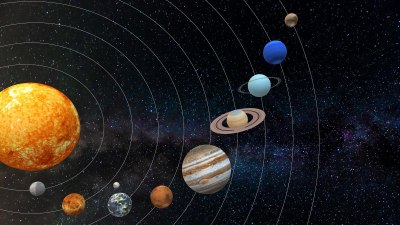How the Earth's Orbit Affects Seasons
Discover how Earth's orbit influences seasonal changes and climate patterns throughout the year.

Image by wirestock_creators on Freepik
The Earth experiences seasons due to its axial tilt and orbit around the Sun. This phenomenon significantly affects global climate and ecosystems, prompting various adaptations in flora and fauna. The concepts of summer, winter, spring, and autumn are often simplified, yet they stem from complex astronomical interactions. Understanding these influences provides insight into larger climatic patterns and environmental changes. This article delves into the intricacies of Earth's orbit and its implications on seasonal variations.
The Basics of Earth’s Orbit
The Earth orbits the Sun in an elliptical path, which means that its distance from the Sun varies throughout the year. This orbit takes approximately 365.25 days to complete, defining our concept of a year. The axial tilt of 23.5 degrees is equally crucial, as it allows different parts of the Earth to receive varying amounts of sunlight at different times of the year, ultimately giving rise to seasons.
The Role of Axial Tilt
Axial tilt, also known as obliquity, significantly influences how sunlight reaches the Earth's surface. When the Northern Hemisphere tilts toward the Sun, it experiences summer, characterized by longer days and warmer temperatures. Conversely, when the Southern Hemisphere tilts toward the Sun, the Northern Hemisphere experiences winter. This tilt remains constant in orientation as the Earth orbits the Sun, leading to a cyclical pattern of seasons.
Seasons and Solar Energy Distribution
The variation in sunlight receptivity shapes the seasons. During summer in the Northern Hemisphere, sunlight strikes the surface more directly, leading to increased solar energy absorption. In winter, the sunlight strikes at a steeper angle, dispersing energy over a larger area and resulting in colder temperatures. The opposite occurs in the Southern Hemisphere, leading to contrasting seasonal experiences. Understanding this energy distribution is crucial for comprehending seasonal weather patterns.
The Impact of Earth's Orbit on Climate
Earth's climate is heavily influenced by its orbit and axial tilt, contributing to the establishment of distinct climatic zones. Tropical regions near the equator experience consistently warm temperatures year-round, while temperate and polar regions undergo significant seasonal changes. The orbit can also affect long-term climate patterns through phenomena such as Milankovitch cycles, which relate to changes in Earth's orbital characteristics impacting glacial and interglacial periods over thousands of years.
Milankovitch Cycles Explained
The Milankovitch cycles consist of three primary components: eccentricity, axial tilt, and precession. Eccentricity refers to the shape of Earth's orbit, which varies from nearly circular to more elongated over a period of about 100,000 years. This cycle influences the distance from the Sun and the intensity of seasons. The variations in axial tilt and precession also considerably affect solar radiation distribution over various periods, with far-reaching consequences for global climate.
The Connection Between Orbit and Natural Events
Earth's orbit influences not only seasonal changes but also natural phenomena, such as monsoons and El Niño events. These phenomena result from fluctuations in ocean temperatures and atmospheric circulation patterns, often correlated with changes in Earth’s position relative to the Sun. For instance, the El Niño-Southern Oscillation (ENSO) is significantly impacted by variations in sea surface temperatures in the central and eastern Pacific Ocean, which connect to the broader patterns established by Earth’s orbit.
The Role of Seasons in Biodiversity
Seasons impact ecosystems profoundly, dictating patterns of growth, reproduction, and migration among species. Animals have adapted to these annual changes, developing reproductive cycles aligned with seasonal conditions. For example, many birds migrate south for the winter, returning to breeding grounds when conditions are more favorable. Additionally, plant life synchronizes its growth and flowering mechanisms with seasonal changes, optimizing nutrient availability and pollinator interactions.
Seasonal Variability in Agriculture
Agricultural practices are intrinsically linked to seasonal patterns. Farmers carefully consider the timing of planting and harvesting, significantly influenced by climate and seasonal weather changes. In temperate regions, different crops are cultivated during specific seasons based on temperature and daylight availability. This variability often dictates food production levels and can impact global food supply, emphasizing the importance of understanding seasonal patterns.
Effects of Climate Change on Seasons
Climate change is altering seasonal patterns worldwide, impacting weather, temperature, and ecosystem behaviors. Changes in temperature can shift the timing of seasonal events, known as phenology, leading to mismatches in plant-pollinator relationships and broader ecological consequences. For example, warmer temperatures may cause earlier flowering in spring, jeopardizing the lifecycle synchronization among species that depend on each other for survival.
The Future of Earth’s Seasons
As we move further into the 21st century, understanding the effects of climate change on Earth's orbit and seasons becomes ever more critical. The implications of shifting seasons on global weather patterns and biodiversity underscore the need for sustainable practices. Continued research in astronomy, environmental science, and ecology will enhance our grasp of these complex systems and inform future strategies for mitigating the impacts of climate change.
The intricate relationship between Earth's orbit and seasons emphasizes the complexity of our planet's climate system. The cycles of the seasons are more than just a yearly timeline; they are a reminder of the natural rhythms that govern life on Earth. By understanding these processes, we can better prepare for and adapt to future environmental changes, equipping ourselves with knowledge to safeguard our planet's diverse ecosystems for generations to come.











